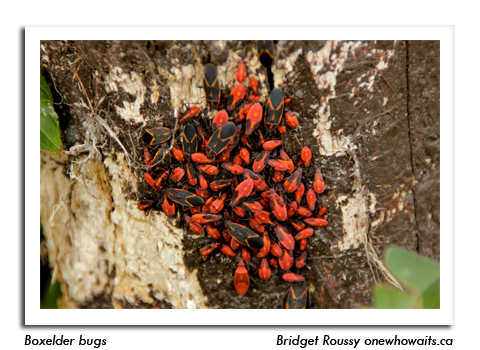
 |
|
|
Looking Ahead
Volume 58 Number 17 Date 08/29/2013 CORN EARWORM - Counts in pheromone traps during the last month have been substantial, with reports of 200 or more moths per trap per week from locations in Dane, Fond du Lac and Green Lake counties. Larvae in all stages of development are present in low to moderate numbers in corn across much of the state. A surge in moth counts at Byron and Green Lake from 78-272 per trap last week to 428-613 per trap this week should ensure that larval populations persist well into September. CORN ROOTWORM - The statewide beetle survey is complete in all but the north-central and northeast areas. Preliminary review of the field data indicates that counts are generally lower than last year across southern and central Wisconsin. Beetle counts in the northwest counties are somewhat higher. Results of the survey are summarized on page 103. EUROPEAN CORN BORER - Egg deposition is expected to continue for another two weeks. The treatment window for second generation larvae has closed near Beloit, Madison, La Crosse and Sullivan, and remains open only a few more days in the southeast and central districts. Final inspections for egg masses and small larvae should be conducted before 2,100 degree days (base 50°F) are surpassed. Larvae in the southern areas are predominantly in the second and third instars. SOYBEAN APHID - Densities have increased to moderate levels in most fields. According to the annual survey finalized earlier this week, the state average aphid count increased from 18 per plant during the July portion of the survey to 55 per plant in August. The August average is the highest in the last five years. Many soybean fields are approaching R5.5-R6, the growth stages at which no yield benefit is gained by insecticide treatment. Final aphid assessments should be made in the week ahead. LATE BLIGHT - Continued development on tomato and potato has been reported, including one new case of the disease on tomato in Milwaukee County. Protective treatments of green vines with a late blight-specific fungicide on a 5- to 7-day schedule should be maintained. Potato tubers remain susceptible to infection even when very little foliage is present. FALL PESTS - The fall invasion of Wisconsin's resident nuisance pest insects is imminent. Boxelder bugs, multicolored Asian lady beetles, western conifer seedbugs and potentially brown marmorated stink bugs are likely to aggregate on the sides of homes and buildings next month as they migrate indoors for the winter. Problems associated with boxelder bugs in particular may be accentuated this year by the dry weather, which inhibits the spread of a fungal disease that regulates populations. Mechanical exclusion by sealing cracks around windows, doors, siding and other openings is advised to prevent these insects from entering residences. Exterior applications of insecticides may offer temporary control of infestations when completely sealing the exterior is difficult or impossible. Applications should consist of a synthetic pyrethroid applied by a licensed pest control operator in September or early October, just prior to insect aggregation. Under no circumstance should chemical insecticides be used indoors. -- Krista Hamilton, DATCP Entomologist 




|
|
|